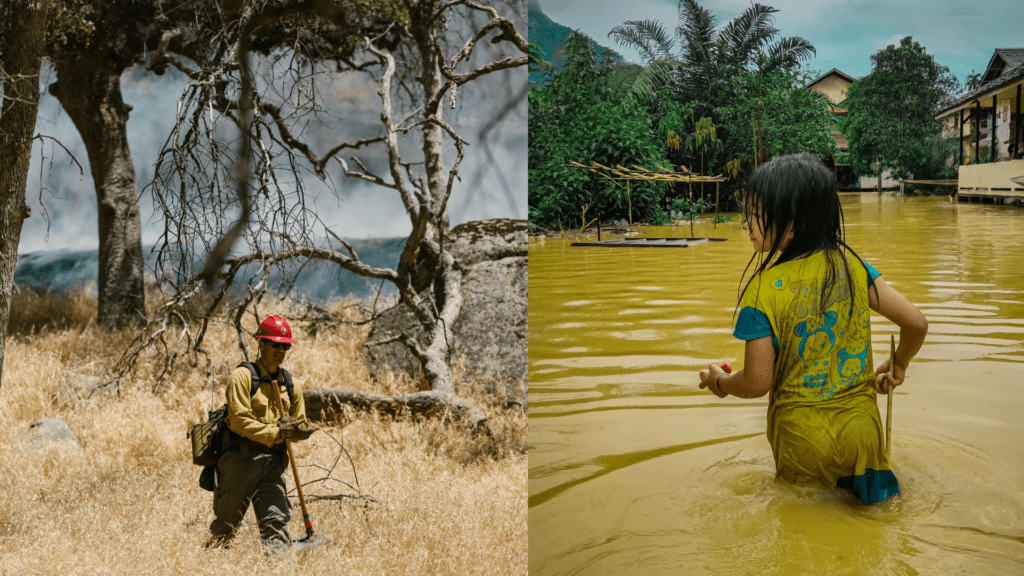Climate Disasters in Europe: Understanding the Crisis and Its Consequences

Introduction
Europe has been grappling with a surge in climate-related disasters, from devastating floods and scorching wildfires to unprecedented heatwaves. As climate change accelerates, Europe’s vulnerability to these extreme weather events has become alarmingly clear. This blog explores the causes behind these climate disasters, their impacts on European society, economy, and environment, and the urgent need for solutions to address this escalating crisis.
The Surge in Climate Disasters Across Europe
In recent years, Europe has witnessed an increase in the frequency and severity of climate disasters, which include:
- Floods: Catastrophic floods have affected several European nations, with particularly severe flooding in countries like Germany, Belgium, and Spain. In 2021, extreme rainfall led to deadly floods in Germany’s Ahr Valley, destroying infrastructure and claiming over 180 lives.
- Wildfires: Southern Europe, including Greece, Turkey, and Italy, has suffered from intense wildfires, exacerbated by prolonged dry conditions and record-breaking temperatures. In 2023, wildfires scorched thousands of hectares of land, devastating forests, wildlife, and communities.
- Heatwaves: Europe has been experiencing more frequent and intense heatwaves. In 2022, a severe heatwave led to record temperatures in the UK and France, creating health risks for vulnerable populations and putting stress on energy and water supplies.
Statistics and Facts:
- Europe’s average temperature is increasing faster than the global average, making the continent especially susceptible to climate change impacts.
- Over 90% of European countries have recorded higher-than-average temperatures in recent summers, contributing to more frequent heatwaves and drought conditions.
Causes of Climate Disasters in Europe
The rise in climate disasters can be traced back to a combination of natural factors and human-induced climate change. Here’s a closer look at the primary contributors:
- Global Warming and Greenhouse Gas Emissions: The burning of fossil fuels and deforestation have led to an accumulation of greenhouse gases in the atmosphere, trapping heat and raising temperatures. This warming has intensified Europe’s weather patterns, creating ideal conditions for extreme weather.
- Changing Ocean Currents and Jet Streams: Europe’s climate is influenced by the Atlantic Ocean currents and jet streams. As global temperatures rise, these currents and streams have shifted, disrupting Europe’s weather systems. For example, a slowed jet stream can lead to prolonged periods of heat or rain, increasing the likelihood of droughts and floods.
- Urbanization and Land Use Changes: Europe’s dense cities and extensive agricultural practices contribute to climate vulnerability. Urban areas, with limited green spaces, can amplify heat, while agricultural activities often require vast water resources, worsening droughts.
Impacts of Climate Disasters on Europe
The effects of these climate disasters are multifaceted, impacting not only the environment but also the social and economic fabric of Europe.
- Economic Consequences: Climate disasters have brought significant economic losses to Europe. Floods alone cost billions in damages to infrastructure, homes, and businesses. The European Union’s estimated cost for climate-related disasters from 1980 to 2020 exceeds €450 billion. Insurance costs are rising, and some regions are now considered too high-risk to insure.
- Human Health and Safety: Heatwaves are a serious public health concern in Europe, with thousands of excess deaths recorded during extreme heat events. Vulnerable populations, including the elderly and people with underlying health conditions, are especially at risk. Additionally, wildfires and floods force thousands of people to evacuate, endangering lives and disrupting communities.
- Environmental Degradation: Climate disasters also have lasting impacts on Europe’s natural landscapes. Wildfires destroy vast forested areas, harming biodiversity and releasing carbon dioxide, which worsens global warming. Floods, meanwhile, can damage soil quality and pollute waterways, affecting agriculture and local ecosystems.
- Agriculture and Food Security: Prolonged droughts and extreme temperatures are affecting Europe’s agricultural output, raising concerns about food security. Key crops, such as wheat, corn, and olives, have suffered from climate extremes, and some farmers are struggling to adapt to changing growing conditions.
Case Studies of Recent Climate Disasters
Examining recent climate events highlights the scope of the issue and provides insights into the challenges faced by affected regions.
- Germany and Belgium Floods (2021): These floods were among the deadliest in recent European history. Heavy rainfall led to rivers overflowing, sweeping away towns and causing extensive damage. The event underscored the need for better flood defenses and early warning systems.
- Wildfires in Greece (2023): A scorching heatwave in Greece sparked wildfires that burned thousands of hectares. The fires impacted tourism, displaced communities, and harmed ancient forests. The event showed the need for improved firefighting resources and forest management practices.
- UK Heatwave (2022): In the summer of 2022, the UK faced record-high temperatures, putting extreme pressure on healthcare and public infrastructure. The heatwave illustrated the risks of heat in regions that are not traditionally prepared for such temperatures.
Europe’s Response to Climate Disasters
Europe has taken significant steps to address climate change and mitigate the impact of climate disasters. Some key initiatives include:
- European Green Deal: The European Green Deal is a comprehensive strategy aimed at making the EU climate-neutral by 2050. It includes policies to reduce greenhouse gas emissions, promote renewable energy, and protect biodiversity.
- Investments in Renewable Energy: European countries are investing heavily in renewable energy, particularly wind and solar, to reduce their dependence on fossil fuels and decrease emissions.
- Adaptation and Resilience Planning: European governments are focusing on improving infrastructure resilience, such as enhancing flood defenses and creating cooling centers to protect residents during heatwaves. Additionally, early warning systems are being strengthened to ensure timely responses to extreme weather events.
- Reforestation and Ecosystem Restoration: Initiatives to restore natural ecosystems, such as reforestation projects, aim to absorb carbon emissions and protect biodiversity. Healthy forests also help reduce wildfire risks by maintaining moisture levels and providing natural firebreaks.
Challenges and the Path Forward
Despite Europe’s progress in climate policy, challenges remain. The costs of climate adaptation are high, and some areas are more vulnerable than others, creating regional disparities. Additionally, transitioning to renewable energy requires substantial investment and coordination across countries.
Europe’s path forward will need to focus on:
- Strengthening Climate Policies: Further reducing greenhouse gas emissions and transitioning to a low-carbon economy are essential.
- Enhancing Public Awareness and Community Involvement: Educating communities about climate risks and involving them in disaster preparedness can help mitigate the impact of climate disasters.
- Building International Cooperation: Climate change is a global issue, and Europe must work with other nations to achieve meaningful progress on climate resilience and emissions reductions.
Conclusion
Europe’s climate disasters are a stark reminder of the urgent need to address climate change. As floods, wildfires, and heatwaves become more frequent, the region faces a critical juncture. By investing in sustainable policies, improving resilience, and embracing community-driven initiatives, Europe can work toward a future where it is better prepared for the impacts of climate change and more resilient against the threats of extreme weather.




